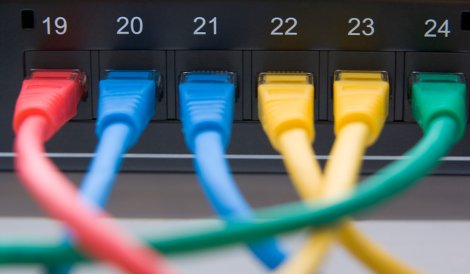Early in December, the Amsterdam Internet Exchange (AMS-IX) announced Netflix had become the first customer of its first exchange in the US. The exchange will live in the New York-New Jersey metropolitan area data centers operated by some of the largest wholesale data center providers in the country.
There is more to this deal than simply an expansion by a European company into the US market. This is the first material outcome of a project that has been in the making for about two years that could significantly alter the US data center and connectivity market.
Netflix, along with numerous data center, content and connectivity providers, is part of a non-profit called Open IX, tasked with bringing elements of the European member-governed internet exchange model to the US to provide an alternative to incumbent exchanges.
The problem, according to Open IX, is that a handful of data center providers privately operate nearly all key internet exchanges in the US, which results in high peering costs and a lack of options for redundancy. The small group with an iron grip on network peering in the US includes the likes of Verizon Terremark, CoreSite, Telx and most of all, Equinix.
Of all data center providers who operate internet exchanges, Equinix’ exchange portfolio outnumbers every other in the US, according to PeeringDB, an online database of global peering information. From New York, Ashburn, Chicago and Atlanta to Dallas, Seattle, Los Angeles and Palo Alto, the company operates more exchanges in more major US markets than anyone else. And these exchanges have some of the biggest numbers of participants.
Euro model’s benefits
The main advantages of the European model are standardized pricing – which results in inexpensive private and public peering – traffic transparency and member governance, according to DrPeering International, a peering consultancy. Advantages of the model that dominates in the US today include the ability by the data center operator to attract the most valuable peers to an exchange, bundled colocation and peering prices, around-the-clock staffing and operational consistency.
Open IX is acting as a certification body, endorsing both data center and exchange operators that satisfy its standards. Standard documents for both came out in the fall and the certification process started in November.
Data center providers and exchanges are now racing to be first to establish exchanges in the four top-tier markets: New York, Chicago, Northern Virginia and Silicon Valley. “It’s a rush to market for the IXPs,” John Sarkis, VP of connectivity and carrier operations at Digital Realty, says, explaining that the first new exchange to launch in each market “will probably prevail”.
What it takes
Josh Snowhorn, VP and general manager of interconnection at CyrusOne, a data center provider that operates its own internet exchange, says key endorsement requirements for data center providers are robust availability and complete carrier neutrality. “No walled gardens,” he says. Snowhorn sits on one of the Open IX committees. CyrusOne plans to apply for endorsement of its data centers and its exchange.
No exchange can be in an Equinix facility if its operator wants to be endorsed, Snowhorn says and Sarkis confirms. Equinix has consistently declined to provide any substantive comment on Open IX. “We routinely evaluate new developments in technology and interconnects and we’re fully aware of the Open IX effort and have been attending the meetings since its early stages,” an Equinix spokesperson wrote in an emailed statement.
Language about pricing has not been included in the standards to avoid potential antitrust issues it could have raised, Snowhorn says.
Exchanges bring customers
Vinay Nagpal, director of carrier relations at DuPont Fabros, says bringing exchanges like AMS-IX and the London Internet Exchange (LINX) into its facilities means more opportunities for the data center provider to attract tenants. Its New Jersey data center will host a LINX exchange and its Virginia site will host AMS-IX. The exchanges plan to go through the Open IX endorsement process and Nagpal is confident that the data centers will be endorsed as well. DuPont is already negotiating a number of potential tenant deals as a result. Earlier this year, the provider announced that it would add retail colocation services in the data centers that host internet exchanges. The company said the move was a direct result of its participation in Open-IX.
Whether endorsed exchanges will reach the critical mass of participants necessary to become worthy alternatives to those operated by Equinix and the others remains to be seen. The initiative is in early stages, but judging by the rush by some of the world’s biggest data center and exchange operators to get on board, it has the potential to become a disruptive force. One thing everybody – be it DuPont Fabros or Equinix – agrees on is that a wider pool of competing players means the customers end up being the ultimate winners.
A version article first appeared in the latest issue of DatacenterDynamics FOCUS. Visit the magazine's web page to read digitally or for a free subscription.

